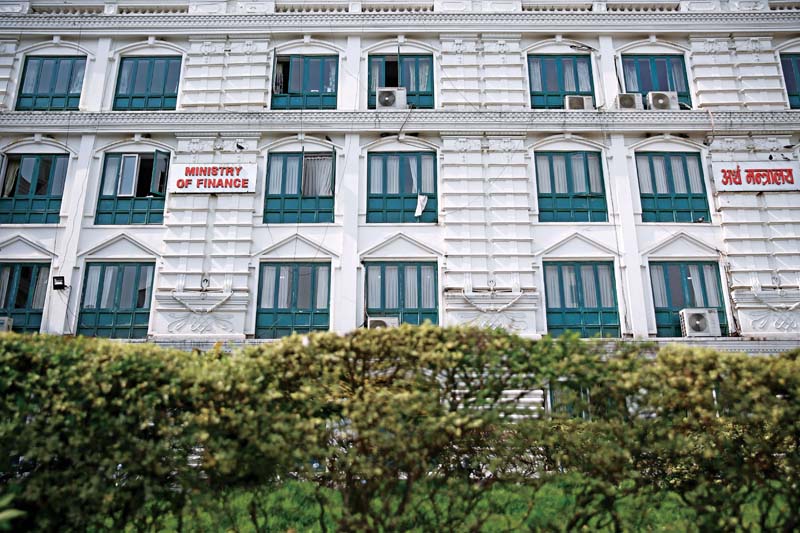MoF identifies sources for budget financing
Sources of Finance for development in 2015Kathmandu, January 1
As the government requires more resources for physical and institutional infrastructure in the federal system, the Ministry of Finance (MoF)’s recent report has shown possibility of maximising revenue and foreign assistance to finance development projects.
A report titled ‘Development Finance Assessment for Nepal’ prepared by the MoF, with support from the United Nations Development Programme and Asia Pacific Development Effectiveness Facility, has identified some critical steps to generate the resources required for the budget financing in the future.
The federal government needs to transfer grants to the lower layers of administration — provincial and local — from next fiscal, 2018-19. The budget of current fiscal has allocated Rs 225 billion as grant to be transferred to 753 local bodies. As provincial assemblies will be formed by next month, the budget of next fiscal would have to transfer grant to seven provinces.
The MoF report has said that the domestic revenue will continue to increase with improved efforts, including in tax administration. “There are opportunities to increase tax revenues further, among others, by widening the tax base for income tax and reducing discretionary tax exemptions,” says the report.
Currently, revenue-to-GDP ratio is around 24 per cent, which is high amongst south Asian economies and the annual revenue growth rate ranged from 11 per cent to 33 per cent in between fiscal 2007-08 and fiscal 2016-18, according to the MoF.
The government has been achieving higher growth target in recent years. However, economist have said that the government will not be able
to achieve the accelerated revenue growth in the future without increasing tax rates, which will have adverse impact on economic expansion.
“Nevertheless, government might have space to increase the revenue by expanding tax net and reforming tax enforcement agencies, as the federal system has also envisioned single enforcement agency in each layer of government to reduce the tax collection cost,” said Madan Kumar Dahal, a senior economist. “It is crucial that the government give due priority to expanding economic activities, which will automatically increase government’s revenue.”
The MoF report has also highlighted the potential to replenish the funding requirements through foreign assistance. However, the government needs to enhance its absorption capacity. This is because lack of implementing capacity of the development projects is considered as a major challenge in mobilising more foreign aid.
“Actual foreign aid disbursements compared to commitments received is low due to low level of absorptive capacity within the government,” states the report. “Efforts to strengthen the capacity of the government to utilise aid offered can potentially raise the level of foreign assistance, both in the forms of grants and concessional lending.”
Currently, the country’s liability on debt is around 24 per cent of the GDP and the report suggests that the government should obtain foreign debt without challenging debt sustainability level of the country. Citing huge gap between foreign aid commitments and disbursement, the report has said that at least 70 per cent of foreign aid commitment needs to be realised.
In the context of increasing credit demand in the private sector, which was served by the remittances and the government’s expenses, decline in the remittances could impact the private sector credit growth, as per the report.
The report has suggested focusing on enabling business environment, attracting foreign and domestic investment and expanding the economic activities to expand the revenue base in the future to gradually lower the dependency on foreign aid in federal Nepal.






